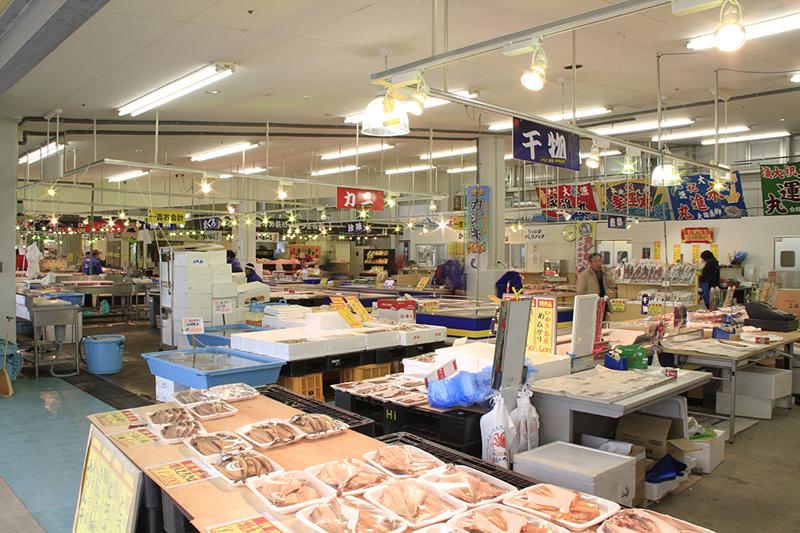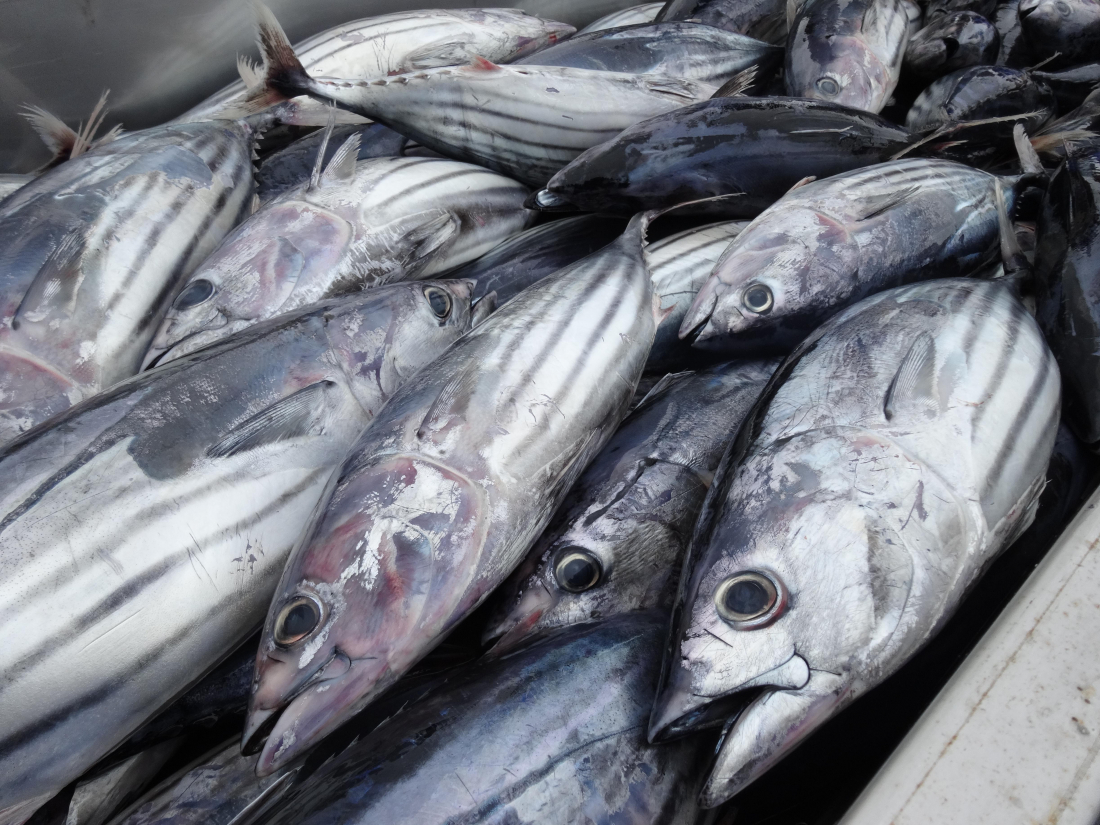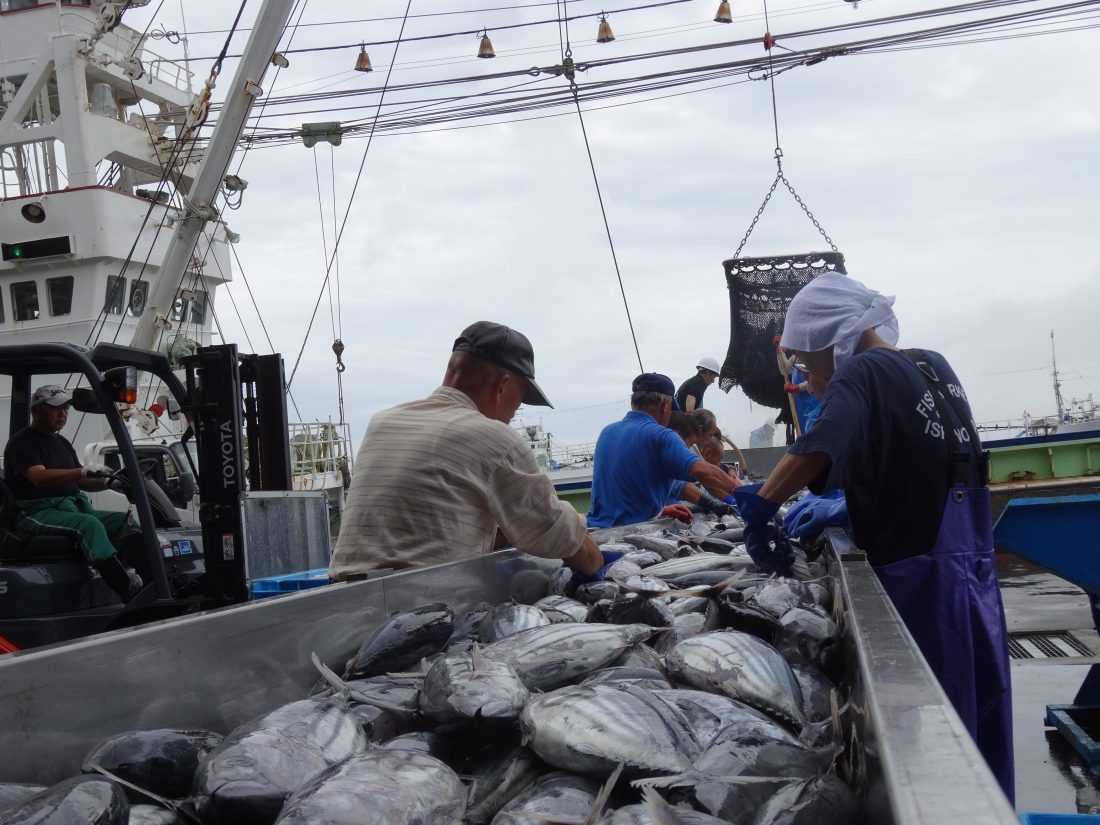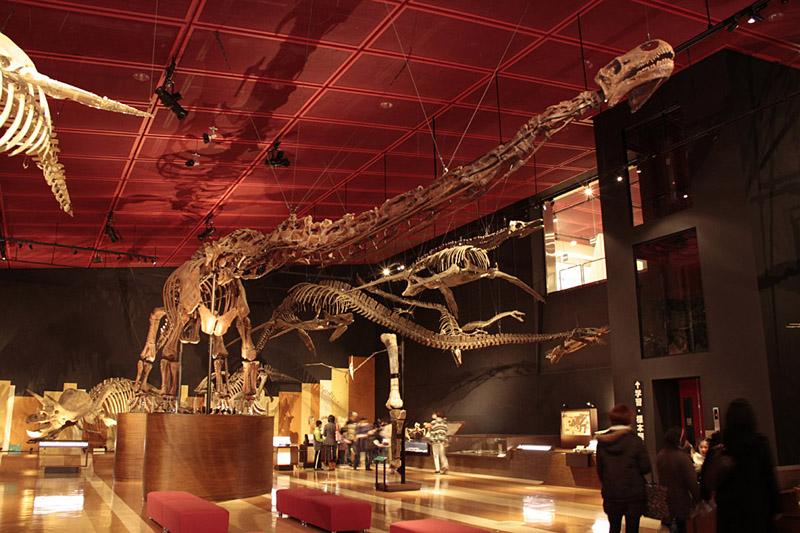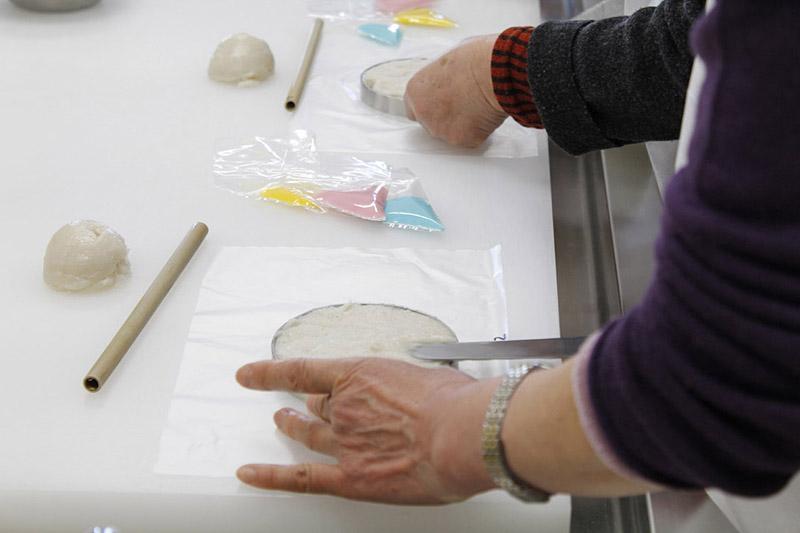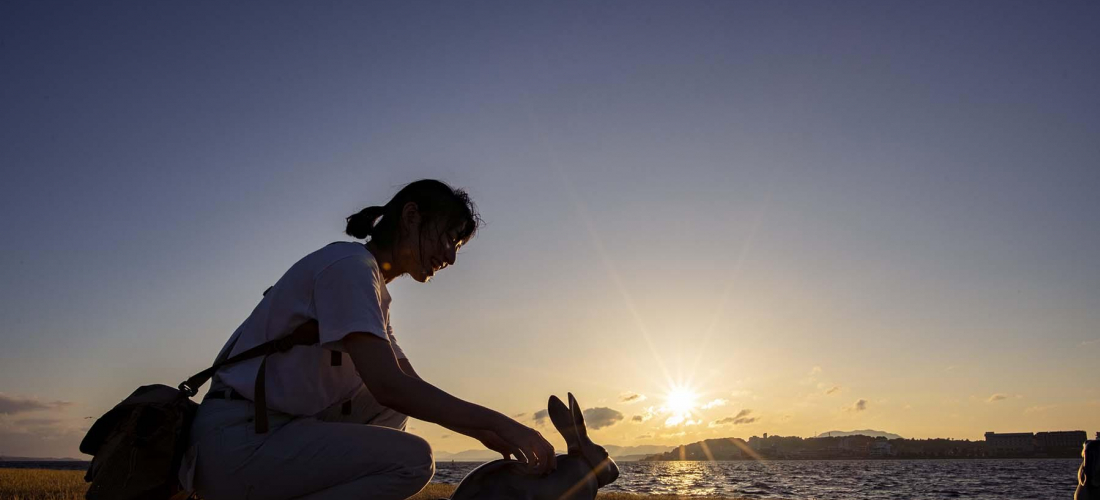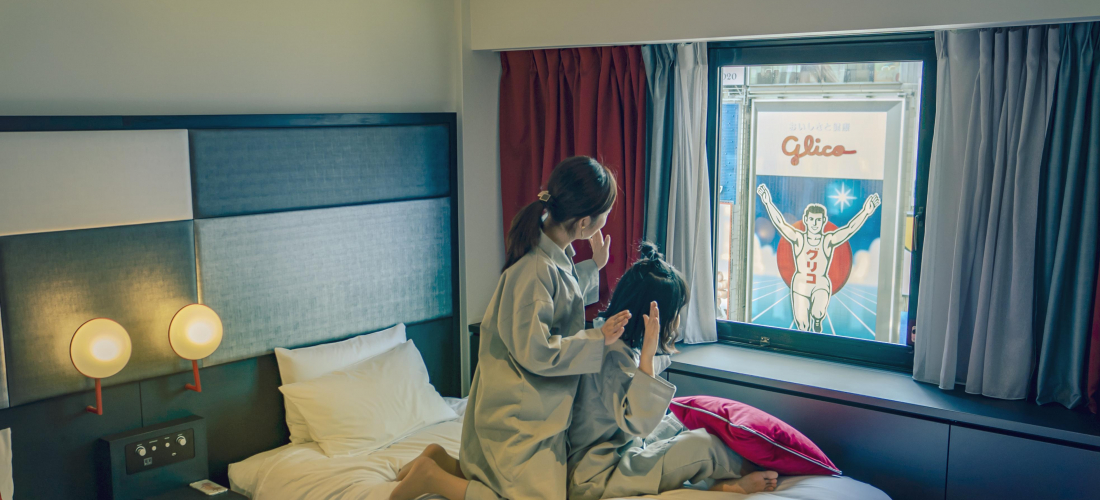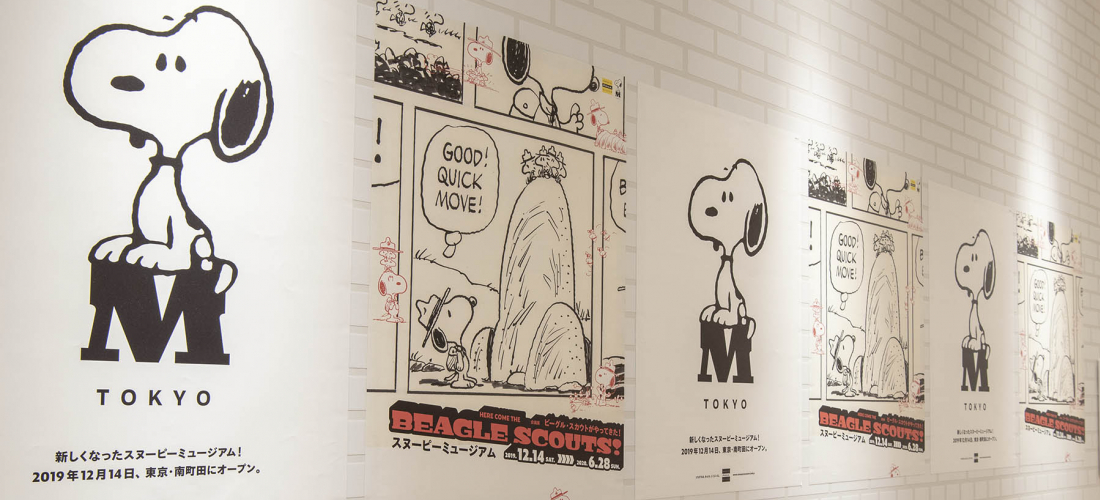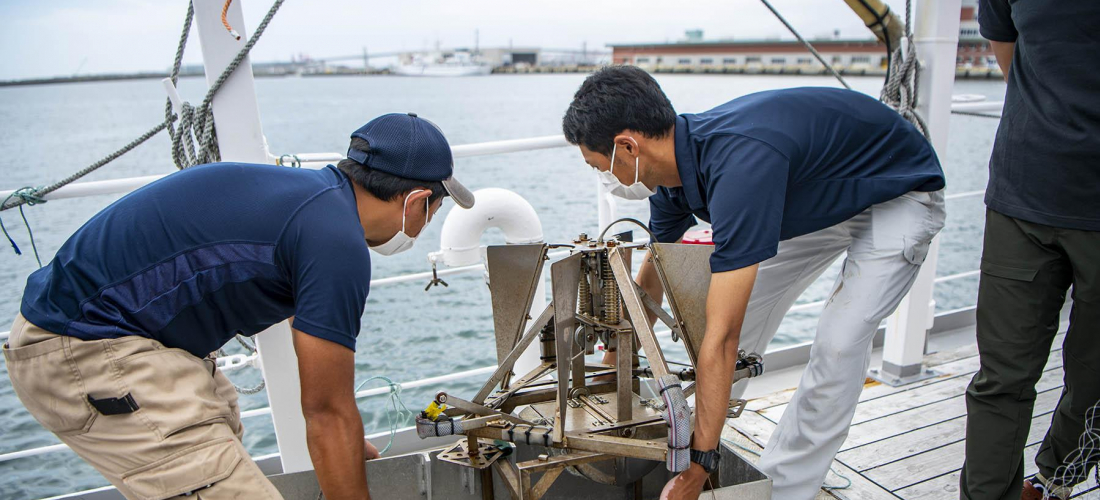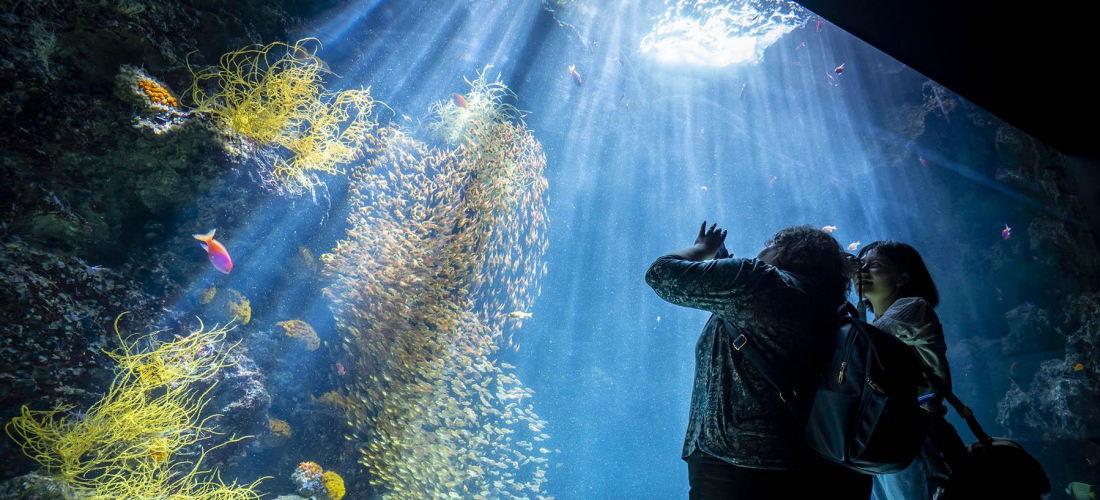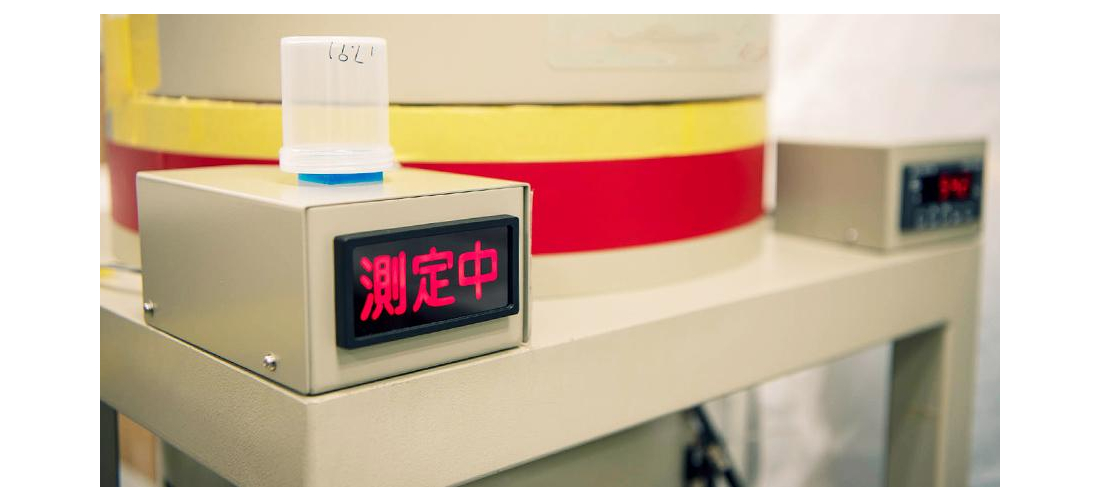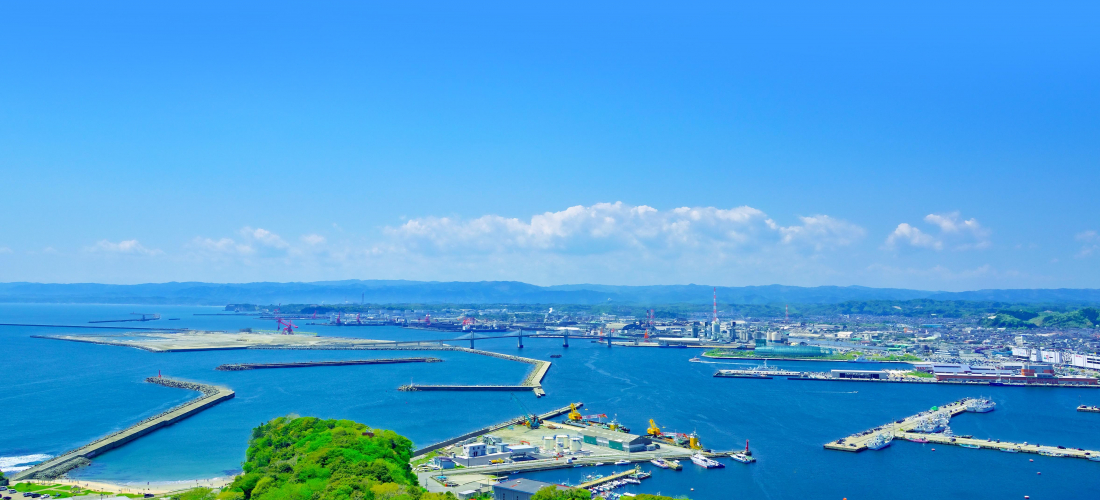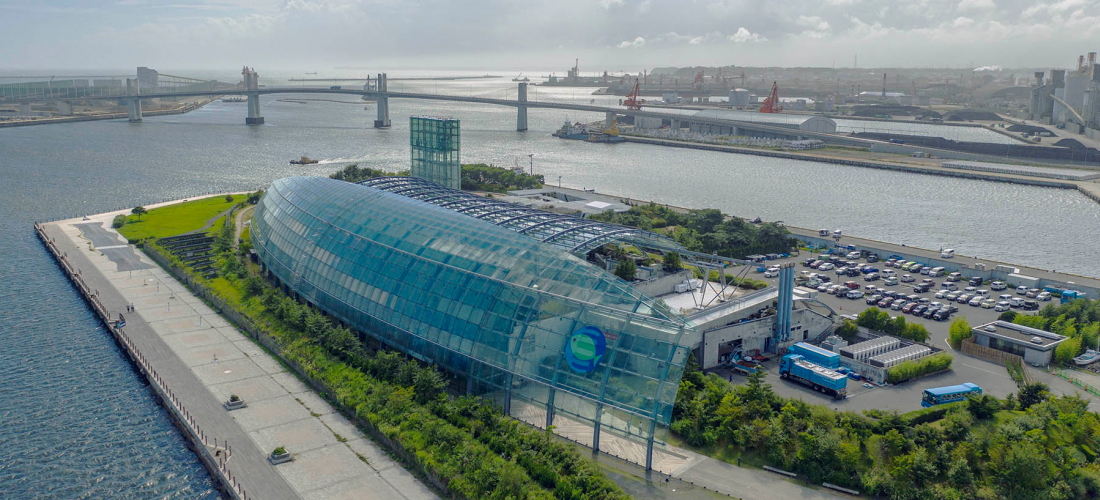
CONTENTS
L’une des trois régions de Fukushima, la zone côtière «Hama-dori» regorge de charmes, dont l’une n’est autre que la ville méridionale d’Iwaki!
La ville d’Iwaki (いわき市) – La région la plus peuplée de Fukushima
Parmi les nombreuses villes des six préfectures qui composent la région du nord du Japon de Tohoku (Aomori, Akita, Iwate, Miyagi, Yamagata et Fukushima), Iwaki a la deuxième plus grande population (338045 habitants sur 1232km²), et c'est la plus grande ville de la préfecture de Fukushima. Iwaki a particulièrement de longues heures d'ensoleillement et le climat doux signifie que les changements de température d'été et d'hiver sont doux et assez mineurs. Ainsi, lorsque le temps commence à se réchauffer chaque été, les plages de Nakoso (勿 来), Yotsukura (四 倉), Usuiso (薄 磯) et d'autres endroits le long du rivage d'Iwaki deviennent des destinations balnéaires pour les touristes de Tokyo, avec tout le monde cherchant à se rafraîchir dans l'eau. Mais ce n'est que du soleil et du sable ― jetons un coup d'œil à cette grande ville de Fukushima et à toutes les choses qui la rendent spéciale.
L’origine du “Joban-mono”- Goutez les douceurs de la mer à son meilleur niveau
Face au Pacifique, la mer au large de la côte d'Iwaki a la grande chance d'être le lieu où se mélangent le courant chaud de Kuroshio et le courant froid d'Oyashio, réunissant les nombreuses variétés de poissons qui migrent au nord sur le courant de Kuroshio et le plancton du courant d'Oyashio. Ce point de rencontre offre aux poissons un endroit pour se nourrir et se reproduire en grand nombre, ce qui en fait un lieu de pêche idéal pour les captures abondantes de balaurs frais du Pacifique, de lotte, d'oursin et de bonite. Les fruits de mer qui sont le produit de cette récolte abondante sont appelés le "Joban-mono" (常 磐 も の) de Fukushima, et leur variété abondante et leur fraîcheur sont très prisées.
Surtout, le listao ou bonite, appelé «katsuo» (カ ツ オ) en japonais, est particulièrement apprécié des citoyens d'Iwaki, qui en ont fait une grande partie de l'alimentation locale depuis longtemps. Le katsuo sashimi frais est un incontournable de tout festin de fête, et en plus des plats japonais courants de katsuo sashimi cru et de "katsuo tataki" poêlés sur un feu de paille, les familles d'Iwaki préparent souvent du katsuo "yakibitashi" (焼 び た し), un plat local de katsuo sauté garni de sauce soja au gingembre.
Les voyageurs peuvent goûter à l'abondante variété de fruits de mer et de saveurs produites par Iwaki dans les marchés aux poissons locaux comme Iwaki Lalamew et dans les restaurants de la ville.
Sources chaudes & Hula – Le premier complexe hôtelier du Japon
L'onsen (温泉, source chaude) le plus populaire de la zone côtière de Hama-dori à Fukushima se trouve à Iwaki, et Iwaki Yumoto Onsen (い わ き 湯 本 温泉), comme on l'appelle, a une histoire qui remonte à 1600 ans. En fait, Iwaki Yumoto Onsen est célèbre pour faire partie d'une des trois plus anciennes destinations de sources chaudes du Japon, aux côtés de Dogo Onsen (道 後 温泉) à Ehime et Arima Onsen (有 馬 温泉) à Hyogo. Chaque minute, la source produit cinq tonnes d'eau chaude, censée avoir des effets médicinaux, et la source est connue sous le nom de "bijin no yu" (美人 の 湯, eau embellissante) grâce aux effets embellissants qu'elle a sur la peau.
Plus récemment en 1966, le tout premier complexe spa / parc à thème du Japon, Spa Resort Hawaiians, a ouvert ses portes à Iwaki Yumoto Onsen, profitant de la générosité de l'eau de source chaude. Les clients peuvent toujours visiter et profiter des piscines et d'autres attractions à l'intérieur des bâtiments du complexe, qui sont toutes réglées à une température de 28 ° C tout au long de l'année, en plus de ce qui est peut-être le plus grand bain onsen extérieur du Japon, appelé «Edo-Jowa Yoichi» et des divertissements mettant en vedette des danseurs de hula et de couteau à feu. La station est également bien connue au Japon grâce au film japonais de 2006 Hula Girls, basé sur une histoire vraie, qui parle de danseurs de hula dans une petite ville du Japon, et présente une version cinématographique de Spa Resort Hawaiians.
Une ville à la richesse historique constituée de fossiles et de mines de charbon
Une chose qui revient encore et encore dans l'histoire d'Iwaki, ce sont les mines de charbon. Dans le petit quartier Iwaki de Mirokusawa (弥勒 沢), du charbon a été découvert en 1856, et dans les années suivantes, toute la région a été appelée par la suite Joban Tanden (常 磐 炭 田), ou champs houillers de Joban. Pendant le siècle suivant, l'industrie charbonnière de Joban Tanden a grandement contribué au développement économique du Japon, avant que la mine ne ferme définitivement, mais des changements comme l'ouverture de Spa Resort Hawaiians ont aidé l'industrie du tourisme locale à prendre le dessus. Avec les mineurs de charbon au travail pour creuser la montagne, non seulement les habitants d'Iwaki ont trouvé du charbon, mais ils ont également trouvé des fossiles de dinosaures et plus encore. De nos jours, il existe encore de nombreux sites et installations liés à l'histoire des mines de charbon et des fossiles de la région, comme les vestiges du sanctuaire d'Uchigoyama et de l'anneau de sumo (内 郷 山 神社 跡 ・ 相撲 場 跡), du musée de la mine de charbon de Mirokusawa (み ろ く 沢 炭 鉱資料 館) et Iwaki City Coal & Fossil Museum Horuru (い わ き 市 石炭 ・ 化石 館 ほ る る).
Où le bord de mer rencontre les villages de montagne
La ville d'Iwaki, surplombant le paysage infini de l'océan Pacifique, n'est pas seulement un endroit offrant une vue magnifique sur la mer ― il y a aussi de superbe lieux d'observation des fleurs de cerisier, des endroits pour profiter des couleurs changeantes des feuilles d'automne, et plus encore, dans toutes les directions. En ce qui concerne les sites célèbres sur l'eau, le phare de Shioyazaki (塩 屋 崎 灯台) a été choisi comme l'un des 50 meilleurs phares du Japon, Benten Island et le pont Shunuri (peint en vermillon) (弁 天 島 と 朱 塗 り の 橋) s'avancent dans le la mer en tant que symboles emblématiques de la côte de Hattachi, et la plate-forme d'observation Shiomidai (潮 見 台) offre un regard passionnant directement dans l'eau. Sur terre, il y a le magnifique ravin de Natsuigawa (夏井川 渓 谷), Sedogaro (背 戸 峨 廊) avec ses vues magnifiques sur les cascades qui se faufilent autour de formations rocheuses accrocheuses, et la gorge de Ryujin (龍神 峡), un endroit célèbre pour son magnifique feuillage d'automne.
Bien sûr, Iwaki est également parsemé de célèbres spots de sakura (桜, fleurs de cerisier)! Le cerisier pleureur du sanctuaire Ogawasuwa (小川 諏 訪 神社) vieux de 500 ans est à ne pas manquer, le parc Matsugaoka (松 ヶ 岡 公園) et son vaste paysage de cerisiers Yoshino est un spectacle à voir, le parc Nakoso (勿 来 関 公園) compte 600 arbres sakura, et le Shinden Oyamazakura (新 田 大 山 桜) est un célèbre cerisier qui fleurit en une tempête rose chaque année, niché dans les montagnes.
Des activités et des expériences variées
À Iwaki, les voyageurs peuvent s'essayer à la cueillette de fraises, de myrtilles, de raisins et même de tomates locales, ou peuvent fouiller leurs propres fossiles au Iwaki Ammonite Center ou au musée du charbon et des fossiles d'Iwaki City Horuru. Pour ceux qui aiment faire preuve de créativité, il existe des usines traditionnelles qui proposent des ateliers de fabrication de poteries originales de Sue ou de cuisson de galettes de poisson kamaboko à partir de poisson frais local. Il existe même des cours de danse hula dispensés par des danseurs professionnels! Avec de l'espace pour se promener et une variété de ressources touristiques, il y a beaucoup à voir et à faire à Iwaki.
Gardez un œil sur Japankuru pour en savoir plus sur Fukushima à venir, et pour plus d'informations et de new du Japon, suivez-nous sur twitter, instagram, et facebook!
COMMENT
FEATURED MEDIA
VIEW MORE 
A New Tokyo Animal Destination: Relax & Learn About the World’s Animals in Japan
#pr #japankuru #anitouch #anitouchtokyodome #capybara #capybaracafe #animalcafe #tokyotrip #japantrip #카피바라 #애니터치 #아이와가볼만한곳 #도쿄여행 #가족여행 #東京旅遊 #東京親子景點 #日本動物互動體驗 #水豚泡澡 #東京巨蛋城 #เที่ยวญี่ปุ่น2025 #ที่เที่ยวครอบครัว #สวนสัตว์ในร่ม #TokyoDomeCity #anitouchtokyodome

Shohei Ohtani Collab Developed Products & Other Japanese Drugstore Recommendations From Kowa
#pr #japankuru
#kowa #syncronkowa #japanshopping #preworkout #postworkout #tokyoshopping #japantrip #일본쇼핑 #일본이온음료 #오타니 #오타니쇼헤이 #코와 #興和 #日本必買 #日本旅遊 #運動補充能量 #運動飲品 #ช้อปปิ้งญี่ปุ่น #เครื่องดื่มออกกำลังกาย #นักกีฬา #ผลิตภัณฑ์ญี่ปุ่น #อาหารเสริมญี่ปุ่น

도쿄 근교 당일치기 여행 추천! 작은 에도라 불리는 ‘가와고에’
세이부 ‘가와고에 패스(디지털)’ 하나면 편리하게 이동 + 가성비까지 완벽하게! 필름카메라 감성 가득한 레트로 거리 길거리 먹방부터 귀여움 끝판왕 핫플&포토 스폿까지 총집합!
Looking for day trips from Tokyo? Try Kawagoe, AKA Little Edo!
Use the SEIBU KAWAGOE PASS (Digital) for easy, affordable transportation!
Check out the historic streets of Kawagoe for some great street food and plenty of picturesque retro photo ops.
#pr #japankuru #도쿄근교여행 #가와고에 #가와고에패스 #세이부패스 #기모노체험 #가와고에여행 #도쿄여행코스 #도쿄근교당일치기 #세이부가와고에패스
#tokyotrip #kawagoe #tokyodaytrip #seibukawagoepass #kimono #japantrip

Hirakata Park, Osaka: Enjoy the Classic Japanese Theme Park Experience!
#pr #japankuru #hirakatapark #amusementpark #japantrip #osakatrip #familytrip #rollercoaster #retrôvibes #枚方公園 #大阪旅遊 #關西私房景點 #日本親子旅行 #日本遊樂園 #木造雲霄飛車 #히라카타파크 #สวนสนุกฮิราคาตะพาร์ค

🍵Love Matcha? Upgrade Your Matcha Experience With Tsujiri!
・160년 전통 일본 말차 브랜드 츠지리에서 말차 덕후들이 픽한 인기템만 골라봤어요
・抹茶控的天堂!甜點、餅乾、飲品一次滿足,連伴手禮都幫你列好清單了
・ส่องมัทฉะสุดฮิต พร้อมพาเที่ยวร้านดังในอุจิ เกียวโต
#pr #japankuru #matcha #matchalover #uji #kyoto #japantrip #ujimatcha #matchalatte #matchasweets #tsujiri #말차 #말차덕후 #츠지리 #교토여행 #말차라떼 #辻利抹茶 #抹茶控 #日本抹茶 #宇治 #宇治抹茶 #日本伴手禮 #抹茶拿鐵 #抹茶甜點 #มัทฉะ #ของฝากญี่ปุ่น #ชาเขียวญี่ปุ่น #ซึจิริ #เกียวโต

・What Is Nenaito? And How Does This Sleep Care Supplement Work?
・你的睡眠保健品——認識「睡眠茶氨酸錠」
・수면 케어 서플리먼트 ‘네나이토’란?
・ผลิตภัณฑ์เสริมอาหารดูแลการนอน “Nenaito(ネナイト)” คืออะไร?
#pr #japankuru #sleepcare #japanshopping #nenaito #sleepsupplement #asahi #睡眠茶氨酸錠 #睡眠保健 #朝日 #l茶胺酸 #日本藥妝 #日本必買 #일본쇼핑 #수면 #건강하자 #네나이토 #일본영양제 #อาหารเสริมญี่ปุ่น #ช้อปปิ้งญี่ปุ่น #ร้านขายยาญี่ปุ่น #ดูแลตัวเองก่อนนอน #อาซาฮิ

Japanese Drugstore Must-Buys! Essential Items from Hisamitsu® Pharmaceutical
#PR #japankuru #hisamitsu #salonpas #feitas #hisamitsupharmaceutical #japanshopping #tokyoshopping #traveltips #japanhaul #japantrip #japantravel

Whether you grew up with Dragon Ball or you just fell in love with Dragon Ball DAIMA, you'll like the newest JINS collab. Shop this limited-edition Dragon Ball accessory collection to find some of the best Dragon Ball merchandise in Japan!
>> Find out more at Japankuru.com! (link in bio)
#japankuru #dragonball #dragonballdaima #animecollab #japanshopping #jins #japaneseglasses #japantravel #animemerch #pr

This month, Japankuru teamed up with @official_korekoko to invite three influencers (originally from Thailand, China, and Taiwan) on a trip to Yokohama. Check out the article (in Chinese) on Japankuru.com for all of their travel tips and photography hints - and look forward to more cool collaborations coming soon!
【橫濱夜散策 x 教你怎麼拍出網美照 📸✨】
每次來日本玩,是不是都會先找旅日網紅的推薦清單?
這次,我們邀請擁有日本豐富旅遊經驗的🇹🇭泰國、🇨🇳中國、🇹🇼台灣網紅,帶你走進夜晚的橫濱!從玩樂路線到拍照技巧,教你怎麼拍出最美的夜景照。那些熟悉的景點,換個視角說不定會有新發現~快跟他們一起出發吧!
#japankuru #橫濱紅磚倉庫 #汽車道 #中華街 #yokohama #japankuru #橫濱紅磚倉庫 #汽車道 #中華街 #yokohama #yokohamaredbrickwarehouse #yokohamachinatown

If you’re a fan of Vivienne Westwood's Japanese designs, and you’re looking forward to shopping in Harajuku this summer, we’ve got important news for you. Vivienne Westwood RED LABEL Laforet Harajuku is now closed for renovations - but the grand reopening is scheduled for July!
>> Find out more at Japankuru.com! (link in bio)
#japankuru #viviennewestwood #harajuku #omotesando #viviennewestwoodredlabel #viviennewestwoodjapan #비비안웨스트우드 #오모테산도 #하라주쿠 #日本購物 #薇薇安魏斯伍德 #日本時尚 #原宿 #表參道 #japantrip #japanshopping #pr

Ready to see TeamLab in Kyoto!? At TeamLab Biovortex Kyoto, the collective is taking their acclaimed immersive art and bringing it to Japan's ancient capital. We can't wait to see it for ourselves this autumn!
>> Find out more at Japankuru.com! (link in bio)
#japankuru #teamlab #teamlabbiovortex #kyoto #kyototrip #japantravel #artnews
Photos courtesy of teamLab, Exhibition view of teamLab Biovortex Kyoto, 2025, Kyoto ® teamLab, courtesy Pace Gallery

Japanese Makeup Shopping • A Trip to Kamakura & Enoshima With Canmake’s Cool-Toned Summer Makeup
#pr #canmake #enoshima #enoden #에노시마 #캔메이크 #japanesemakeup #japanesecosmetics

⚔️The Robot Restaurant is gone, but the Samurai Restaurant is here to take its place. Check it out, and don't forget your coupon!
🍣신주쿠의 명소 로봇 레스토랑이 사무라이 레스토랑으로 부활! 절찬 쿠폰 발급중
💃18歲以上才能入場的歌舞秀,和你想的不一樣!拿好優惠券去看看~
#tokyo #shinjuku #samurairestaurant #robotrestaurant #tokyotrip #도쿄여행 #신주쿠 #사무라이레스토랑 #이색체험 #할인이벤트 #歌舞伎町 #東京景點 #武士餐廳 #日本表演 #日本文化體驗 #japankuru #japantrip #japantravel #japanlovers #japan_of_insta

Japanese appliance & electronics shopping with our KOJIMA x BicCamera coupon!
用JAPANKURU的KOJIMA x BicCamera優惠券買這些正好❤️
코지마 x 빅 카메라 쿠폰으로 일본 가전 제품 쇼핑하기
#pr #japankuru #japanshopping #kojima #biccamera #japaneseskincare #yaman #dji #osmopocket3 #skincaredevice #日本購物 #美容儀 #相機 #雅萌 #日本家電 #일본여행 #면세 #여행꿀팁 #일본쇼핑리스트 #쿠폰 #일본쇼핑 #일본브랜드 #할인 #코지마 #빅카메라 #japankurucoupon

